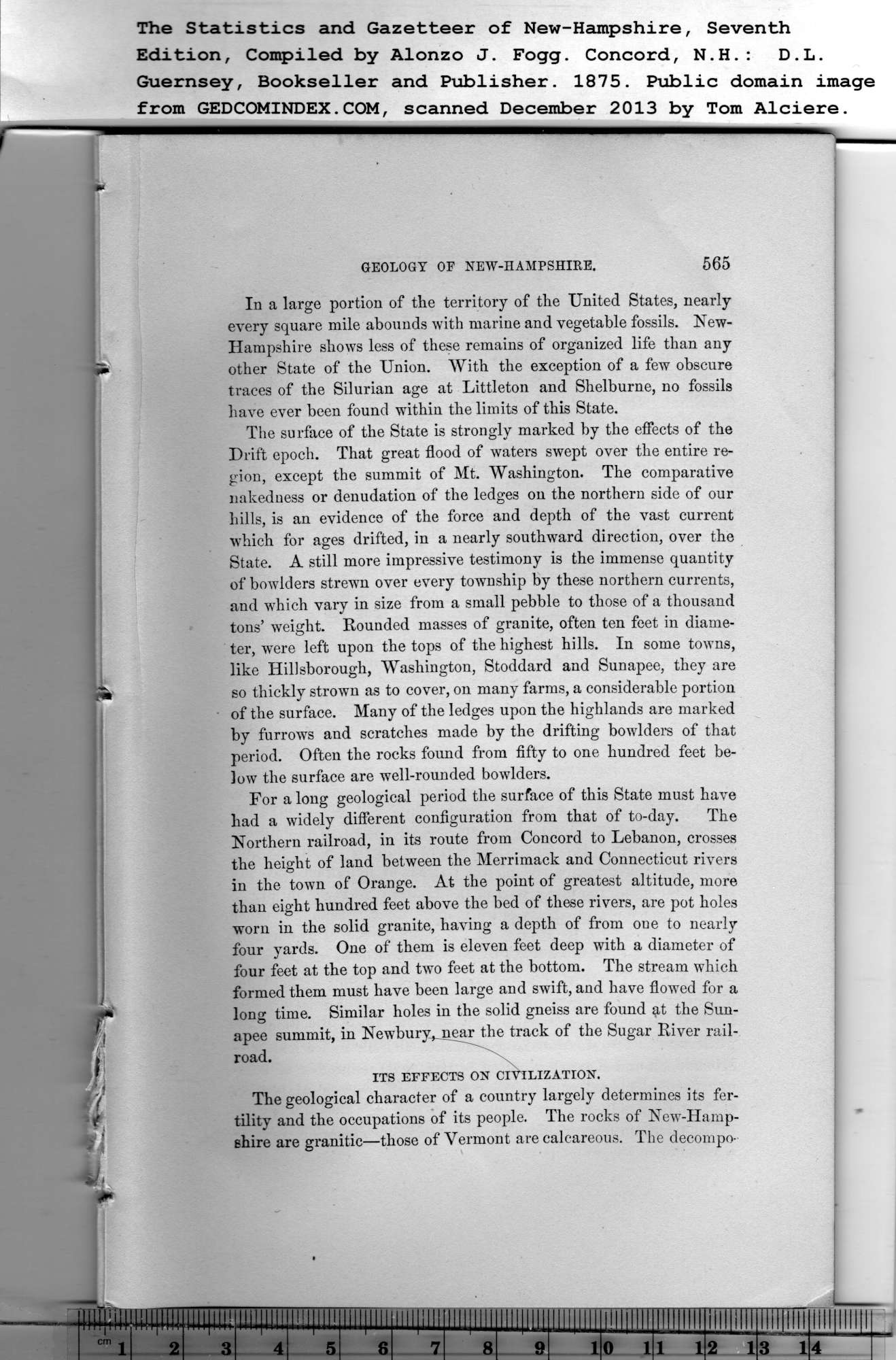|
GEOLOGY OF NEW-HAMPSHIRE. 565
In a large portion of the territory of the United States, nearly
every square mile abounds with marine and vegetable fossils. New-
Hampshire shows less of these remains of organized life than any
other State of the Union. With the exception of a few obscure
traces of the Silurian age at Littleton and Shelburne, no fossils
have ever been found within the limits of this State.
The surface of the State is strongly marked by the effects of the
Drift epoch. That great flood of waters swept over the entire re-
gion, except the summit of Mt. Washington. The comparative
nakedness or denudation of the ledges on the northern side of our
hills, is an evidence of the force and depth of the vast current
which for ages drifted, in a nearly southward direction, over the
State. A still more impressive testimony is the immense quantity
of bowlders strewn over every township by these northern currents,
and which vary in size from a small pebble to those of a thousand
tons’ weight. Rounded masses of granite, often ten feet in diame-
ter, were left upon the tops of the highest hills. In some towns,
like Hillsborough, Washington, Stoddard and Sunapee, they are
so thickly strown as to cover, on many farms, a considerable portion
of the surface. Many of the ledges upon the highlands are marked
by furrows and scratches made by the drifting bowlders of that
period. Often the rocks found from fifty to one hundred feet be-
low the surface are well-rounded bowlders.
For a long geological period the surface of this State must have
had a widely different configuration from that of to-day. The
Northern railroad, in its route from Concord to Lebanon, crosses
the height of land between the Merrimack and Connecticut rivers
in the town of Orange. At the point of greatest altitude, more
than eight hundred feet above the bed of these rivers, are pot holes
worn in the solid granite, having a depth of from one to nearly
four yards. One of them is eleven feet deep with a diameter of
four feet at the top and two feet at the bottom. The stream which
formed them must have been large and swift, and have flowed for a
long time. Similar holes in the solid gneiss are found at the Sun-
apee summit, in Newbury^ear the track of the Sugar River rail-
road.
ITS EFFECTS ON CIVILIZATION.
(fjr/ The geological character of a country largely determines its fer-
tility and the occupations of its people. The rocks of New-Hamp-
shire are granitic—those of Vermont are calcareous. The decompo-
PREVIOUS PAGE ... NEXT PAGE
This page was written in HTML using a program written in Python 3.2
|
